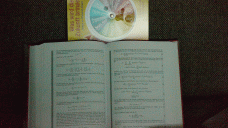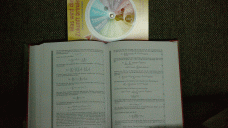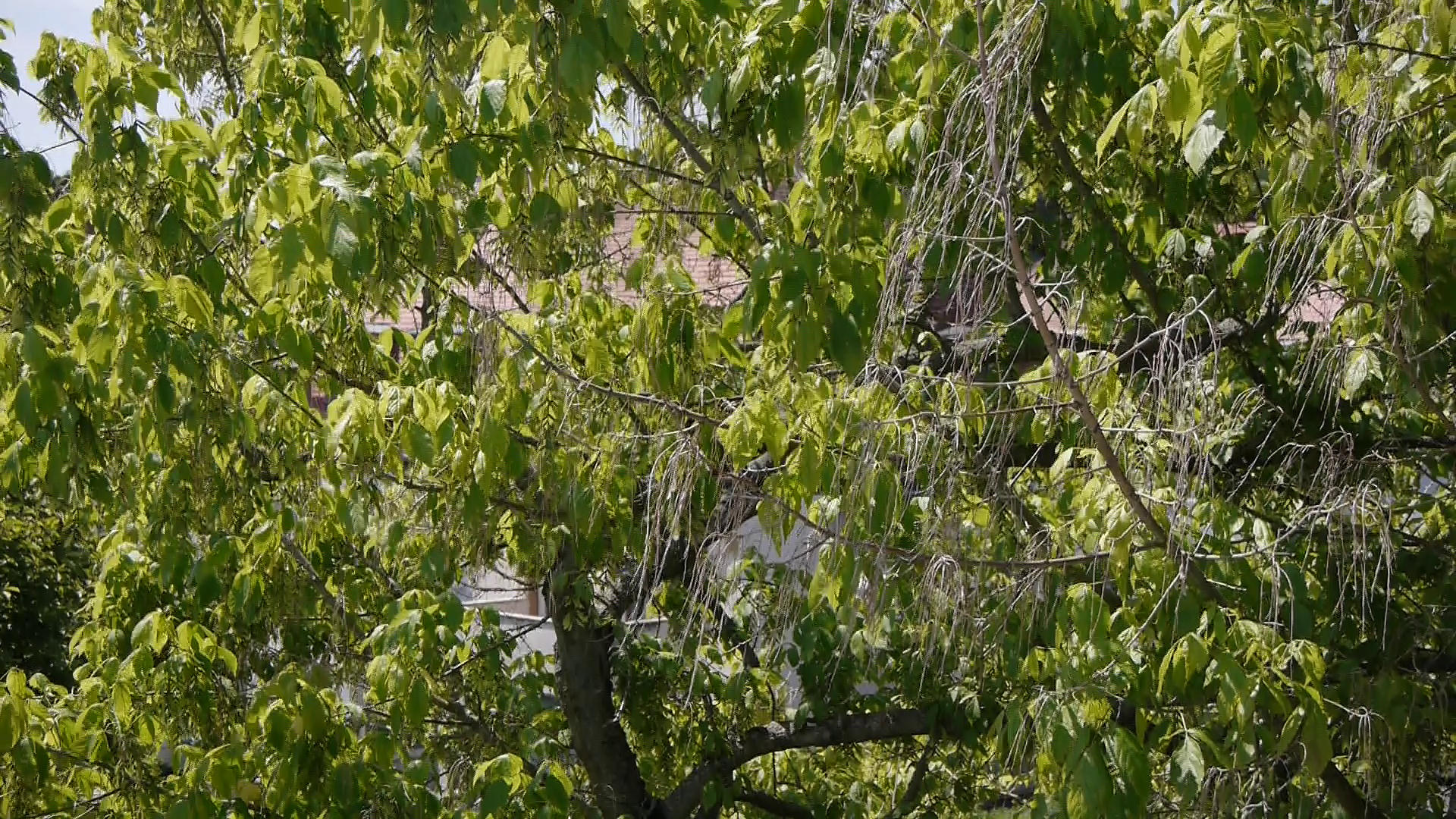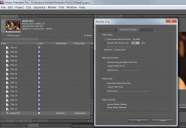
It allows to keep PV going, with more focus towards AI, but keeping be one of the few truly independent places.
-
GH2 Flow Motion v2.02 Update
4GB File-Spanning in HBR 25p, 24H, & 720p with 95MB/sec Class 10 SD cards
Improved reliability in SH 720p60 video mode
With this update, Flow Motion v2.02 has been tested and verified to span reliably across multiple 4GB MTS files, providing extended and uninterrupted recording time on large SD cards. As with previous versions of Flow Motion v2, file-spanning is supported on all Class 10 SD cards in the 60Mbps 24L, FH, and H video modes in both NTSC and PAL frame rates. In addition, 95MB/sec SD cards will span reliably in 100Mbps 24H and SH video modes, and will also span in PAL HBR and FSH modes. (In other words, the only modes not supported for 95MB/sec SD card spanning are NTSC HBR and FSH modes. These modes will record reliably up to the 4GB file size limit.)
Flow Motion v2.02 also features improved reliability when shooting extremely high-detail scenes in NTSC 720p60 SH mode. The stability adjustments made to 720p60 mode do not impair its 100Mbps performance and have no effect on any of the other video modes.
To download the Flow Motion v2.02 Update, click on the following link:
-
@Benibube No problem, check out this link for more info on Per Lichtman's Pasadena Pulse Audio Patch V2 B2, which is incorporated into Flow Motion v2.02:
-
@LPowell First , Thank you for everything you did for us !! God bless you ; ) I'm still working without problem with FM v 2.0 , I got a 32g 95Mb/s SD card , what benefits I'll get with v2.02 ? audio patch and spanning in 24L/H , FH H etc ect right ? but the quality in Mbps will remain the same of previous v2.0? I'm newmbie and sorry for my English Valerio
-
I tried Version 2.2 today. It's a bright glaring day but I guess it's better than rain. It did lock the camera up once in a graveyard and I had to pull the battery. I don't have a clue because I couldn't get it to do it again. The colors are good and the pans seem smooth. I ran this through a quick post just to see and it looks like it grades well.
720p-60 24mm Nikkor Vibrant -2
I need to retest Cluster 4 without a polarizer. It wasn't good.
-
Wheather was sunny and more than a fresh breeze today (~6 bf), so I spent (probably too many) hours testing some patch settings.
I first shot some reference material with GOP3ZILLA (which I have used a lot already), next I installed Span My Bitch Up v2b, then I installed FlowMotion v2.02 for comparison shots.
All tests were done on a freshly formatted SanDisk 64GB 95M/s.
FM 2.02 test with "moving tree leaves in the sun"
720p60 mode
SH
As you may remember, I had earlier reported stability issues with 720p60 SH recordings with FM 2.01, where recordings stopped involuntarily after <= 8 seconds. FM 2.02 seems to be a real step forward towards stability for this mode! Today was even more wind and tree movement than at the time I tested 2.01, but today with 2.02 the shortest SH recording was 55s until the involuntary stop.
Bit rate was 64MBit/s, and image quality very good (but not visibly better than the "H" mode or GOP3ZILLA 720p60 SH recordings, both of which record at ~48MBit/s bit rate).
H
I also tried "H" mode, yielding a bit rate of ~48MBit/s, the recording was stable for 13 minutes. Quality was very good and not visibly different from SH mode or GOP3ZILLA 720p60 SH recording.
1080p 24H mode
I had been happy with the 1080p24 recording of FM 2 already, so there is not much to add here regarding the "moving tree leaves in the sun" test. 110 MBit/s average recording rate, excellent quality with no visible shortcomings, spanning fine multiple times.
HBR 30p
Also no change to my last report regarding HBR - works, but the quality is not quite as good as 24H, see the stange artifacts in my past FM 2 HBR test screen shot.
(Generally, I have not yet found any patch setting that was able to make HBR produce results that were quality wise comparable with 24H. Pity, but I guess I can live without 30p.)
FM 2.02 vs. "Span My Bitch Up" low-light test
I have read several times that one of the strengths of GOP1 settings is their ability to render the inevitable noise in low-light shots better than GOPn>1 settings, the theory being that in a futile attempt to utilize a noisy reference frame the differentially encoded P- or B-frames would render the noise more disturbingly visible to the viewer.
While this theory sounds plausible, in the 50+ test shots I did in a controlled setup (with only one weak bulb illuminating a room, shooting the same stuff with "Span My Bitch Up" and FM 2.02) and using different camera parameter settings, I did not see this theory confirmed.
The low light results I yielded have been influences by even the slightest of camera parameter changes (such as adjusting white balance by only a few clicks) much more than by changing between the GOP1 and the GOP3 setting.
The most relevant things I got out of this test were:
FM 2.02 is capable of rendering even very strong noise as inevitable in a ISO 12800 shot not visibly different from what "Span My Bith Up" yields when using the same camera parameters in the same situation.
White balance is not independent of the chosen ISO value. If you adjust a "custom while balance" setting to a grey card, you do not know what ISO value the camera chose to shoot it, but if you then record video at higher ISO value, you will see the color shift.
Counter-acting the white balance shift with higher ISO values can be done using the "adjust white balance" function of the camera, but if you push one color channel that is under-represented / weaker than the other channels too much, you will see a strong increase in awkward looking noise, even additional banding, flickering, specles. Alas, "what you see" (on the camera display) is not "what you get" in these extreme situations, you have to try. And it's worth trying - if you allow for some off-balance, taking e.g. an ISO 12800 shot with a yellowish tint, this may yield you a much more useful raw material for post-processing than what you get if you fully compensated the white balance (such that "white is white"). De-saturation in post production is your friend. Also, under extreme low lighting conditions, it can be better to not use a grey card with custom white balance (because this can cause the awkward kind of noise mentioned above), instead choose some color temperature that approximates the situation best and start adjustment from there.
With noisy high-ISO recordings, any color space mismatch when loading material into post production software suddenly makes a big difference. See below two screen shots of the very same (unprocessed) frame taken from an ISO 12800 video clip. One screen shot was erraneously interpreted as using the sRGB colorspace instead of the correct ITU R 709 color space.
Turning the exposure-dial in low-light/high-ISO shots has a strange result: Nothing changes up until +2 EV. Then, at +2 to +3, the camera stops trying to shoot at "180° shutter angle" and chooses as long exposure times as possible. Obviously, you can do the same manually in "M" mode, but it's nice to know you can just as well use "P" mode generally and only use the exposure dial if required.
"Noise Reduction" (as in "Film Mode") makes noise worse. Seriously, the fine granular noise at high ISO levels looks better when using "-2" for "noise reduction" in "Film Mode" (and please, also -2 for "sharpening") is visually much less disturbing than the weird noise clusters that remain if you use a high "noise reduction" setting. (This may not be true for low bit rate encoding, but that is what we all do not want to do, right?)
It does not make sense to use lower ISO values than required for adequate exposure. Trying to make e.g. an ISO 3200 video much brighter in post production yields a worse result than using ISO 12800 from the start (accepting the noise or using a denoise filter in post).
Don't be overly afraid of high ISO values. See attached animated GIF that consists of 3 screen shots from an ISO 12800 video, looped at 24 frames per second. You will notice how the high frequency noise is more acceptable in motion than in a still image. (Of course the reduction to a 256 color GIF lowered the quality.)
If you want to sacrifice spatial resolution in exchange for less noise, do so by scaling down (using bi-cubic interpolation) in post-production. Recording 720p from the start yields much worse results.
I really need some sleep now... ;-)
(The also attached ISO 6400 animated GIF has a wrong frame in it and is thus flickering. Alas, I cannot delete it.. - "no permission"...)

 fm202_ISO12800_wrong_colorspace.jpg1920 x 1080 - 574K
fm202_ISO12800_wrong_colorspace.jpg1920 x 1080 - 574K
 fm202_ISO12800_correct_colorspace.jpg1920 x 1080 - 544K
fm202_ISO12800_correct_colorspace.jpg1920 x 1080 - 544K
 fm202_iso12800.gif1920 x 1080 - 5M
fm202_iso12800.gif1920 x 1080 - 5M
 fm202_iso6400.gif1920 x 1080 - 5M
fm202_iso6400.gif1920 x 1080 - 5M -
@karl "(Generally, I have not yet found any patch setting that was able to make HBR produce results that were quality wise comparable with 24H. Pity, but I guess I can live without 30p.)"
It will NEVER happen.
SMBU is a levelled Intra setting targetted at none bush filming people where its perfectly suffice. Flow Motiion is sold as a top setting.
Whats the wrong frame!!?!!
Get some sleep!
-
@karl "(Generally, I have not yet found any patch setting that was able to make HBR produce results that were quality wise comparable with 24H. Pity, but I guess I can live without 30p.)"
I made a test with moving trees and I did not saw visible differencies between 24p and HBR. Where are you MTS files?
From here, don't be fooled by vimeo quality but download original MTS files:
http://www.personal-view.com/talks/discussion/comment/66758#Comment_66758
-
@valpopando With a 95MB/sec SD card, Flow Motion v2.02 will span in 24H and all PAL video modes. It will also span in all 720p modes, in both PAL and NTSC frame rates. V2.02's 100Mbps peak performance is undiminished frrom that of previous versions.
-
@LongJohnSilver: Regarding HBR mode, have a look at the image I posted in my earlier FM 2.0 test:

At 100% zoom you can clearly see compression artifacts that I do not see with FM 2 in 24H, e.g. the jagged outlines of the leaves which look a little as if this image was a screen shot of a badly de-interlaced source.
-
@LPowell Thank a lot General Lee ! ; ))
@Karl In my experiment and test ( still frame too) I got the same result of LongJohnSilver , not a big difference between HBR and 24p .
Are you Final Cut Pro X user ? Cause he doesn't import very well AVCHD HBR format , I convert it (rewrap don't alter video sample) with ClipWrap , then import in FCPX . Is Just an attempt to help you
-
@valpopando: No, I am not a Final Cut Pro X user. Even if the artifacts where somehow related to an erraneous decoding of the .MTS file, that would not explain why the size of the recorded HBR .MTS files divided by their duration calculated to a bit rate of only ~50MBit/s, less than half of what 24H uses for the same scenery.
-
@Karl sorry , I had no read in your previous reply about 50mb/s difference !! I'll try the same experiment
-
I see... clearly visible artifacts on that footage. It's strange. I got that kind of "frying leaves" on my previous attempts with INTRA settings on HBR 30p. This is the reason I give a try with FM and on my shots of moving leaves I found no big difference between 24p and HBR. I measured the bitrate for both the clips and I reached the maximum for 24p and 30p for both. The 24p clips looks something like sharper but it's more of a feeling and I cannot see real artifacts like on your image.
Really I don't know....
@Karl @valpopando regarding the actual bitrate...
maybe I'm wrong here but I think it's normal having roughly half of the bitrate. The HBR stream is encapsulated in a interlaced container with the two half frames repeated (PSF) so I guess streamparser already calculates this, it's counting just the real useful transported frames (half of them). This is the reason why on the same identical scene shot on a tripod I get > 100Mbps on 24p and > 50Mbps on HBR 30p. Please, could someone confirm or correct me?
Byeeeee
-
@LongJohnSilver You are absolutely correct, HBR will NEVER be the same size 'total bitrate for GOP' as 24p. HBR will always be roughly half of that of 24p.
-
@karl Thank you for your detailed evaluation of Flow Motion v2.02. I downloaded and examined the frame grab you posted above that shows artifacts in HBR mode. Are you certain this frame was deinterlaced correctly by the decoder? It has some defects that look similar to the artifacts I saw in one of my own frame grabs that I initially thought were due to interlaced encoding effects. (Click on the second attachment of the top post on this page):
The artifacts in that image are due to an oversight I made in importing the HBR video into Adobe After Effects CS5.5. The GH2 records progressive HBR videos in exactly the same 1080i file format as interlaced FSH files, and there is no explicit way for an editing program to tell the difference. As a result, After Effects naturally assumes that HBR files are interlaced, and interprets the footage as "Upper Field First", which causes spurious interlace artifacts. To correct this, I had to use AE's Interpret Footage dialog to set Separate Fields to OFF. That eliminates the interlace distortion in the HBR frame grab I first uploaded, which I then corrected. (Click on the fourth attachment at the bottom of that post.)
For anyone using HBR footage in a post-production environment, this is a serious hazard. HBR files are in fact interlaced, even though the image sensor is scanned progressively, referred to as "psF" format. Unfortunately, the fact that it is progressive is not contained in the file and must be manually interpreted for each file.
On the technical limitations of HBR video encoding, it's important to understand how the process actually works. Each I-frame in an HBR video is comprised of a pair of separately encoded, interlaced fields: an "I-field" and a "P-field". The P-field uses the I-field as its reference field, similar to how P-frames are encoded in a non-HBR video. Flow Motion HBR mode uses a 3-frame GOP, with two B-frames following each I-frame. Each interlaced B-field in these two frames use the corresponding I-fields or P-fields in the previous and following I-frame as their reference fields.
In effect, each HBR GOP is comprised of two interwoven 1920x540 field sequences, a 6-field GOP in the form I-p-B-b-B-b. Since each field is half the height of a 1920x1080 frame, it requires half as much data. This is why an HBR video is typically about the same size as a 720p video rather than the size of a 24H video. Each 1920x540 I-field contains close to the same amount of data as a 1280x720 I-frame.
In practice, the crucial factor in HBR image quality is the quantization quality of the P-field in each I-frame. In the unhacked AVCHD encoder, this P-field is encoded with significantly coarser quantization than the I-field. In Flow Motion v2, I created Quantization Tables specifically for HBR mode that encode each P-field at the same level of quality as its reference I-field. When decoded and deinterlaced correctly, this preserves the highest practical image quality that the HBR encoder can produce.
Whether FM2's encoding strategy produces HBR videos that can match 24H perceptual quality is ultimately a subjective judgment. In terms of bitrate, since 24H I-frames require twice as much data as HBR I-fields, 24H video will naturally require more bitrate than HBR. Flow Motion v2 accommodates these bitrate requirements proportionally for each video mode - in 24H turbo mode, peak bitrate can range up to 140Mbps, while in HBR mode, peak bitrate is limited to 100Mbps. Judging from my testing of the GH2's capabilities, these are close to the maximum bitrates that can be reliably sustained with each of these video modes, using 30MB/sec Class 10 SD cards.
-
@Alex_K I downloaded the MTS file from your Vimeo page to check it out. MediaInfo identifies its frame rate as 29.97, and recognizes it as an interlaced file. Likewise, when I drag the MTS file into Premiere Pro CS5.5, it lists its frame rate as 29.97. Perhaps your Premiere Interpretation_rules.txt file has somehow been edited to conform HBR files to an incorrect frame rate?
Howdy, Stranger!
It looks like you're new here. If you want to get involved, click one of these buttons!
Categories
- Topics List24,094
- Blog5,725
- General and News1,401
- Hacks and Patches1,153
- ↳ Top Settings33
- ↳ Beginners256
- ↳ Archives402
- ↳ Hacks News and Development56
- Cameras2,399
- ↳ Panasonic995
- ↳ Canon118
- ↳ Sony156
- ↳ Nikon96
- ↳ Pentax and Samsung70
- ↳ Olympus and Fujifilm102
- ↳ Compacts and Camcorders300
- ↳ Smartphones for video97
- ↳ Pro Video Cameras191
- ↳ BlackMagic and other raw cameras147
- Skill1,960
- ↳ Business and distribution66
- ↳ Preparation, scripts and legal38
- ↳ Art149
- ↳ Import, Convert, Exporting291
- ↳ Editors191
- ↳ Effects and stunts115
- ↳ Color grading197
- ↳ Sound and Music280
- ↳ Lighting96
- ↳ Software and storage tips266
- Gear5,420
- ↳ Filters, Adapters, Matte boxes344
- ↳ Lenses1,582
- ↳ Follow focus and gears93
- ↳ Sound499
- ↳ Lighting gear314
- ↳ Camera movement230
- ↳ Gimbals and copters302
- ↳ Rigs and related stuff273
- ↳ Power solutions83
- ↳ Monitors and viewfinders340
- ↳ Tripods and fluid heads139
- ↳ Storage286
- ↳ Computers and studio gear560
- ↳ VR and 3D248
- Showcase1,859
- Marketplace2,834
- Offtopic1,343














